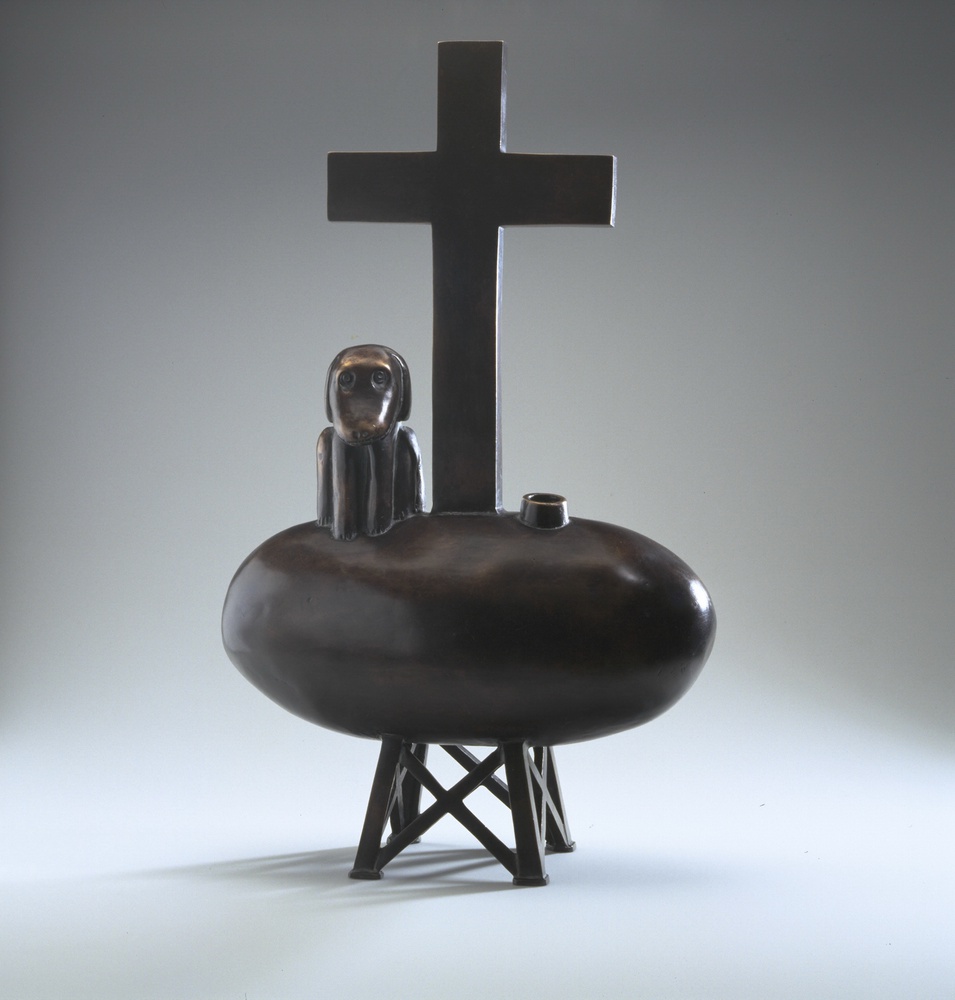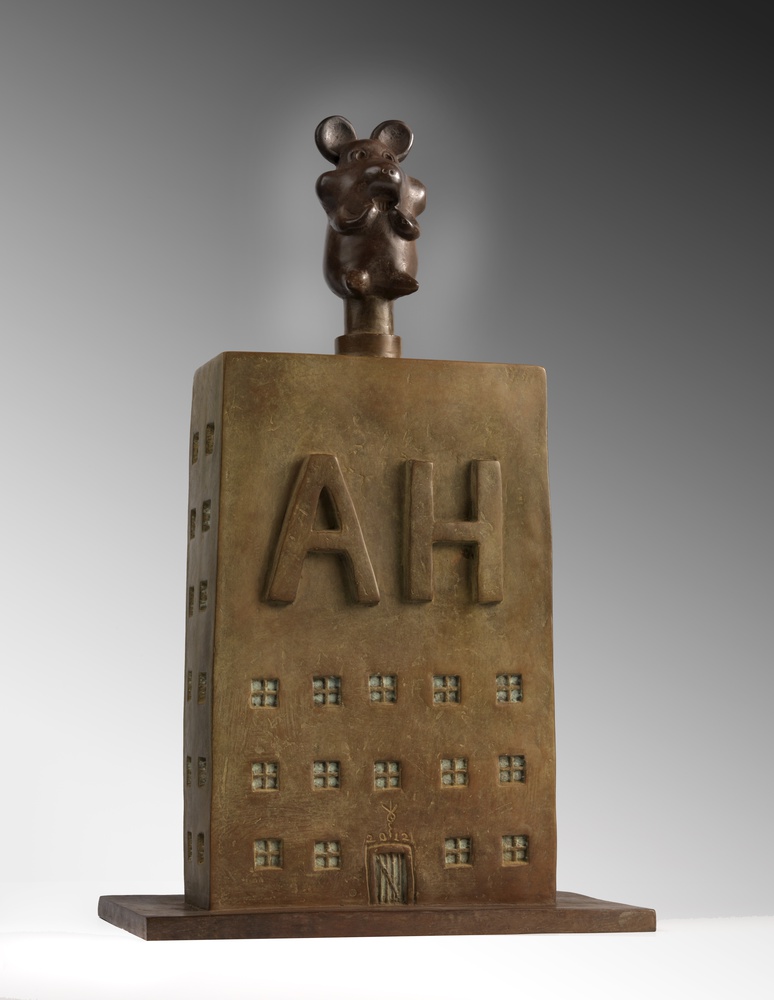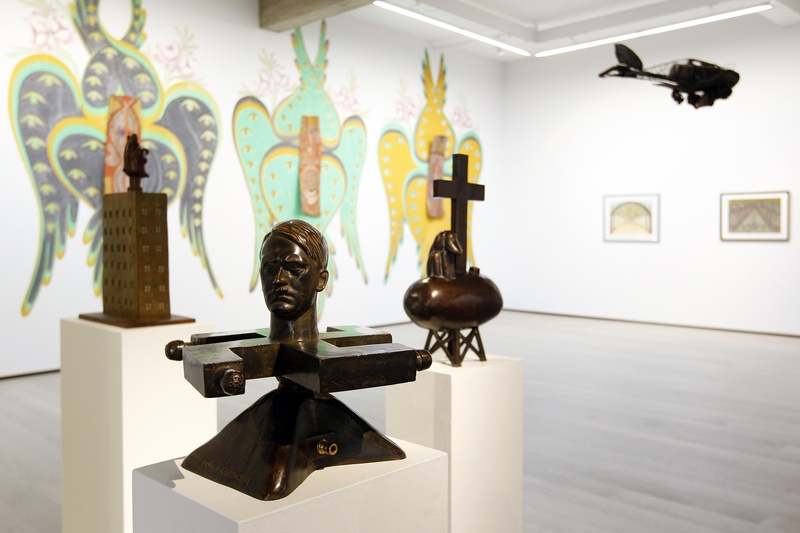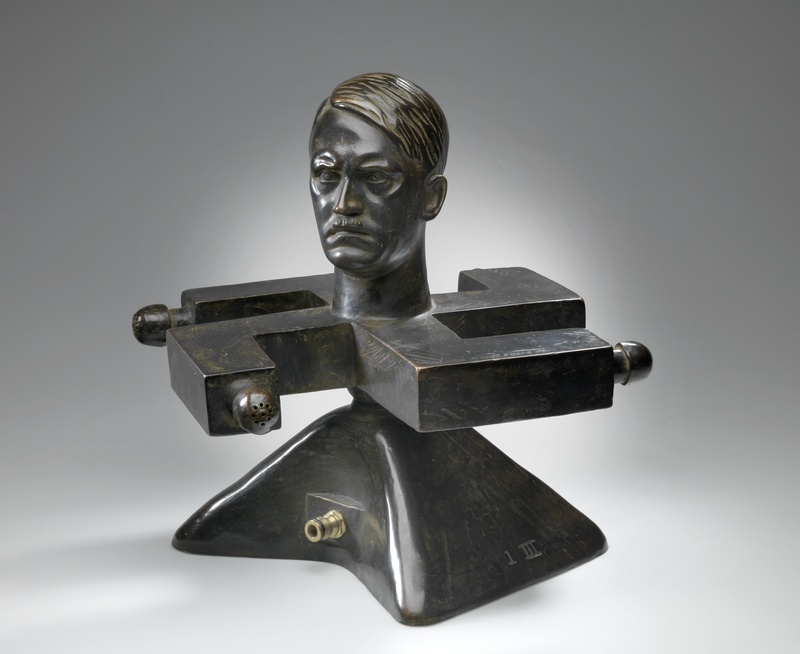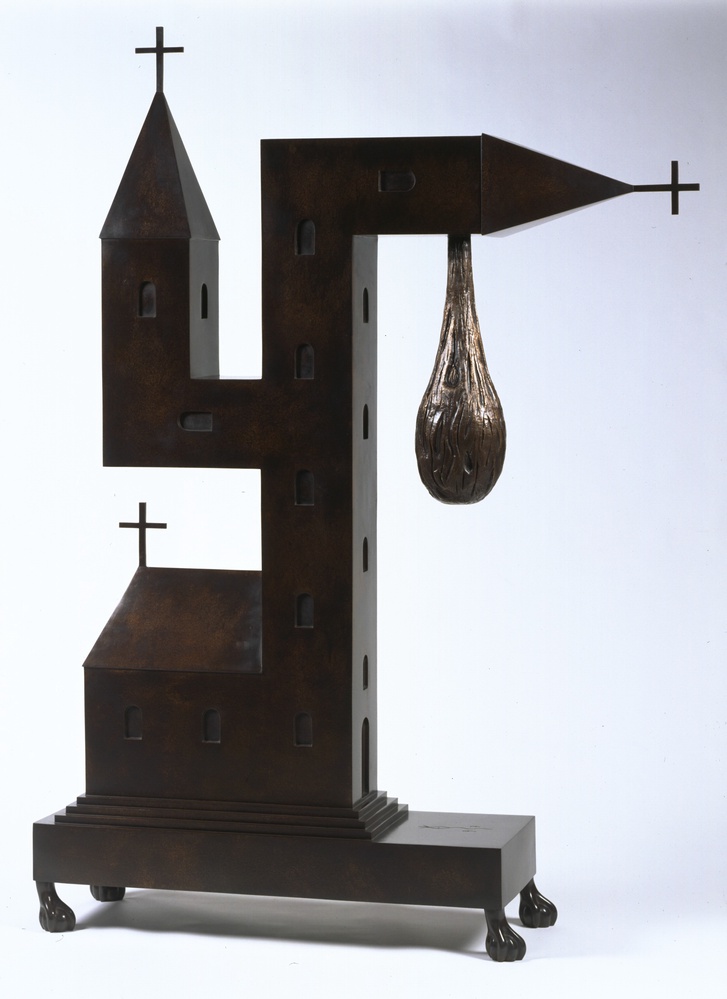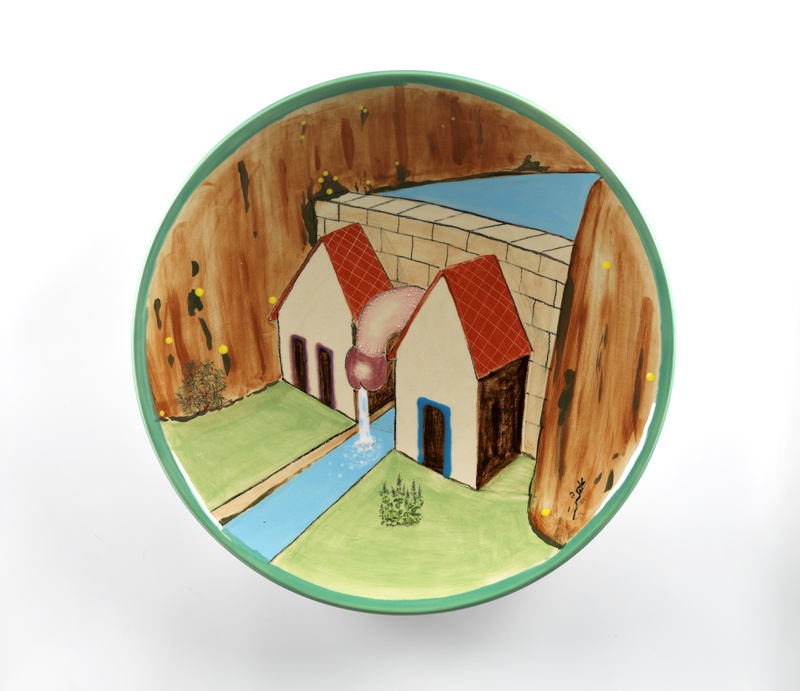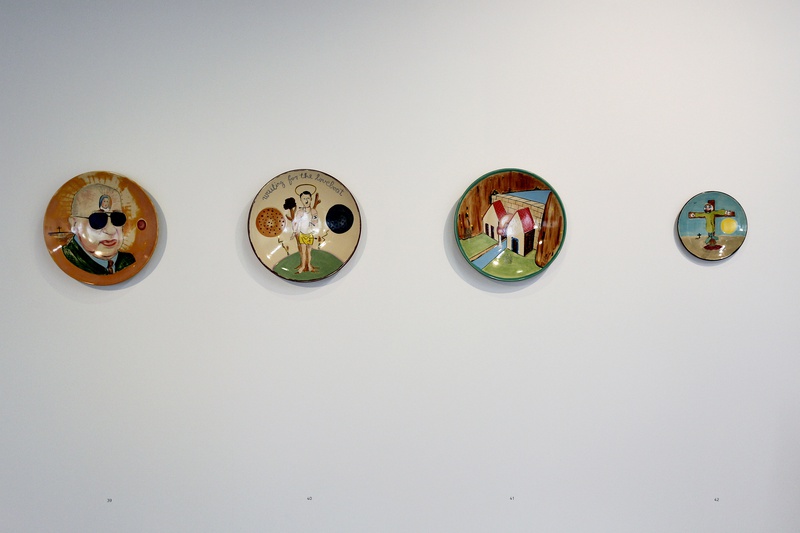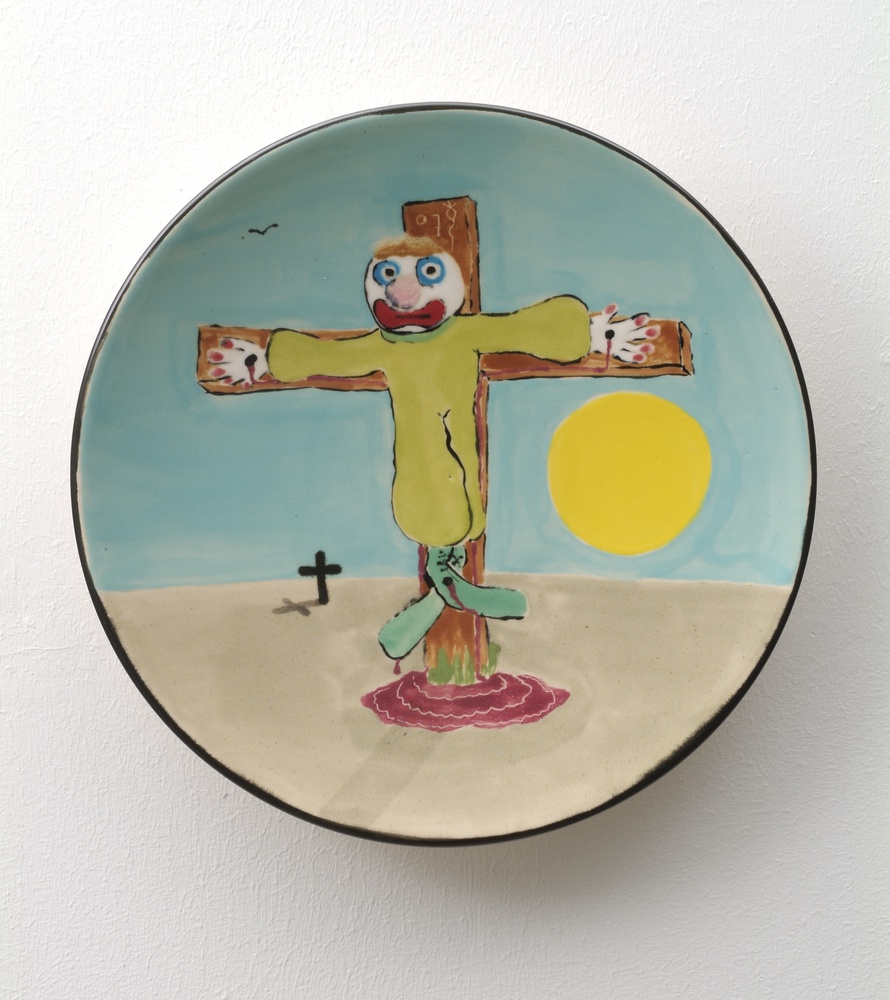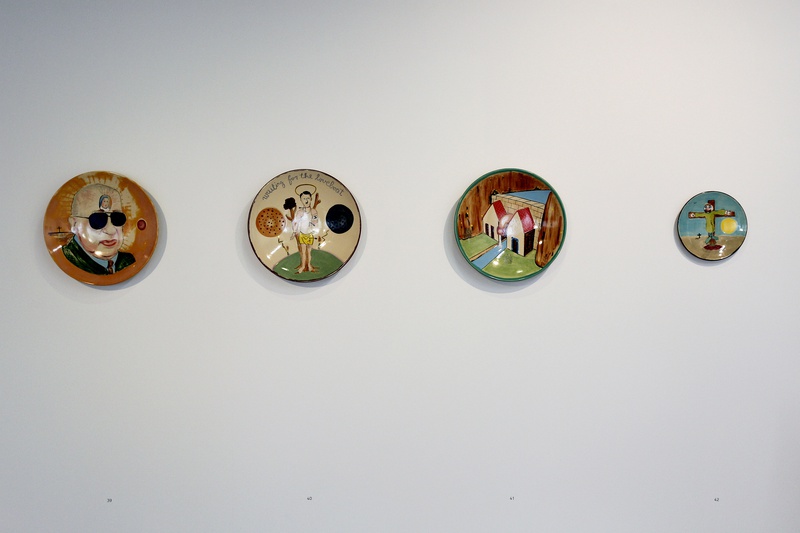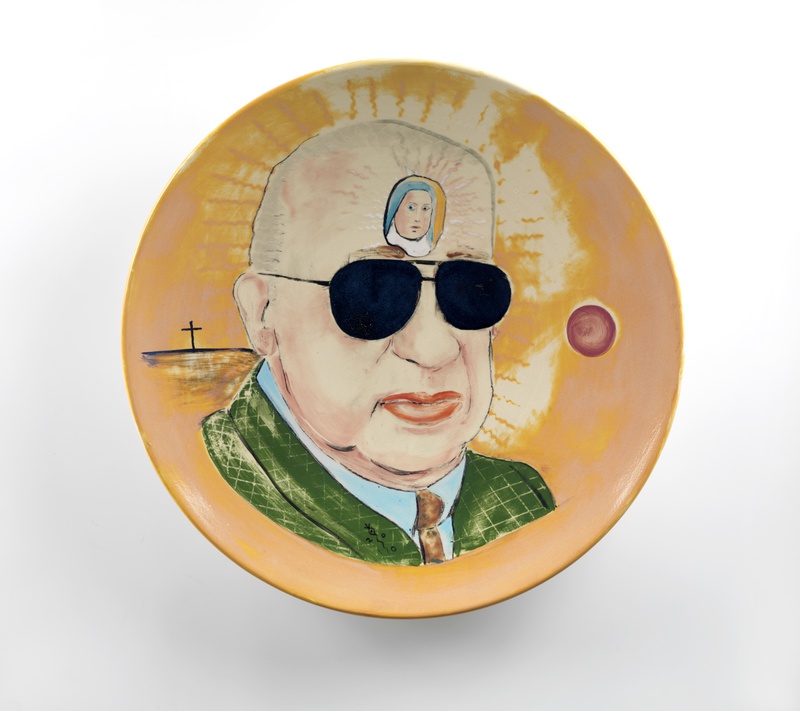Early on in his career, sculptor Joost van den Toorn mainly makes colourful assemblies of existing objects. He includes elements from both western and non-western cultures in an associative way, including amulets, toys, plastic flowers and feathers. He uses unconventional materials such as papier-mâché and tree resin, and more recently he has started using the traditional material of bronze. This is how he removes the boundaries between high and low culture: Van den Toorn simply uses everything that he is interested in visually.
His work is inspired by ethnography and the unpredictable visual language of outsider art, of which he owns an extensive collection himself. It is mainly the accompanying intuitive way of working that fascinates him. The sculptor tries to adopt a similar method by letting go of reason and not being hindered by any knowledge of society or art. According to Van den Toorn he produces his best work when he is simply left to create something, without worrying about the end result.
His works are often cartoon-like, combining ancient symbols and popular visual language. They express themes such as death, religion, sex and the shortcomings of human beings, presented with a mixture of irony, gravity and melancholy. His objects often include contrasts such as beauty - ugliness, good - evil, gravity - lightness. He calls the ‘sacred’ status of art into question in a subtle and humorous way.

